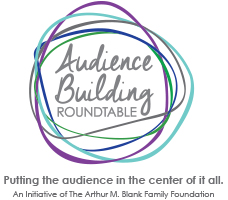By John Turner, President, Turner Research Network
As arts and culture organizations go forward with a data-driven approach to building audiences, one element of this is to generate information from your audience through surveys. We want to know who the audience members are and what they think about the performances or the exhibitions or the venues. We want to know about their experience with us.
Here are some tips about managing that process.
Your database of hundreds or thousands of people is a valuable asset. These are the folks who may be a one-time ticket buyer or a repeat buyer or a loyal patron. They may be active or lapsed patrons. Regardless, each is a source for the information you are seeking. Your current and past audience members are indeed a precious resource — treat them that way so they will continue to want to provide you with valuable information.
When do I send out surveys?
At Turner Research Network, we often receive two questions:
- When do I survey my audience?
- How often can I survey my audience?
Remember that each time you touch a member of your audience, either through social media or through an email announcement or through a survey invitation, it is a touchpoint with your organization and that touchpoint reflects on your organization.
Let’s say you are a theater company and you want to know how people enjoyed the play they attended that evening. You plan to send out a survey invitation to get that feedback. When should you send that invitation? I have received such survey emails on my phone even before I’ve gotten home from a performance! That is too soon. I haven’t even gotten home yet. Or I received it by email first thing the next morning. That is also too soon. There is a fine balance between soon and too soon. We recommend waiting at least 24 hours before sending such a survey invitation. The memory of the experience will still be fresh enough to get good feedback.
Regarding how often to survey your audience, we recommend minimizing the number of times any single audience member receives a survey during a year’s time.
For example, if you have a season subscriber for an eight-show season, we recommend not sending out a ‘How was the show?’ survey to them after each of the eight shows. They will often quit responding to the surveys over time. Instead, take your pool of season subscribers and randomly split them up into several groups. Then rotate the survey invitations across the groups. Group A gets a survey invitation about Show 1, Group B gets a survey invitation about Show 2, etc. During the season, then, a subscriber gets a survey invitation about one or two of the shows. By spreading out these touchpoints, you also increase the likelihood of your audience member opening the invitation and completing the survey.
Avoid asking the same background questions repeatedly.
Another caution: don’t ask the same profile and background questions over and over across multiple surveys. Examples are demographic questions such as age, gender and education.
These questions are fine to ask in a general profile survey of your audience ‘to get to know you a little better’ but can be annoying if you ask them on every survey. Ask these demographic questions of your audience members one time and then append these nuggets of information to the data record of each individual audience member. This information is useful in developing future surveys when you want specific information from specific audience member types.
Patronage data you are keeping for other purposes such as ticket purchases, subscriber status and length of relationship with your organization can also be appended (from your database) to your survey data so you don’t have to ask those being surveyed for that information – you already have it!
For example, when you send a survey invitation to Patron #12345 about the performance they attended on December 10, you already have the demographic profile and attendance profile of this audience member in your survey data file and you only have to ask questions about the performance itself.
An appropriate time to get background information from an audience member is soon after a new audience member is added to your database. If you are sending a survey out to this person for the first time, you can add the demographic profile questions into your other questions. Then save the profile information for future reference and don’t send it to people who have already completed it.
Be brief and to the point in your surveys.
Time is a precious commodity and we want to be respectful of audience members’ time. People who respond to your surveys give freely of their time - and opinions - because they care. If they didn’t care, they wouldn’t respond.
We want to keep the response rate as high as possible. So how do we keep the response rate high?
- Keeping your surveys short and to the point will be less intrusive and give a greater chance that when you go to survey them again in the future they will respond willingly and not ignore that email. In the research world, length of survey is a key indicator of response rate.
- In order to keep the survey as short as possible, only ask questions you need to know for the issues at hand. Avoid the temptation to “tack on” a few other things!
Plan the timing of your surveys, plan what you ask your audience, and don’t ask your audience to repeat information they’ve already provided to you. Be brief, relevant to their experience with your organization, and to the point.
Now, that’s a winning formula for survey creation.
Keywords: Surveys, audience experience, audiences, survey timing, keeping surveys brief
